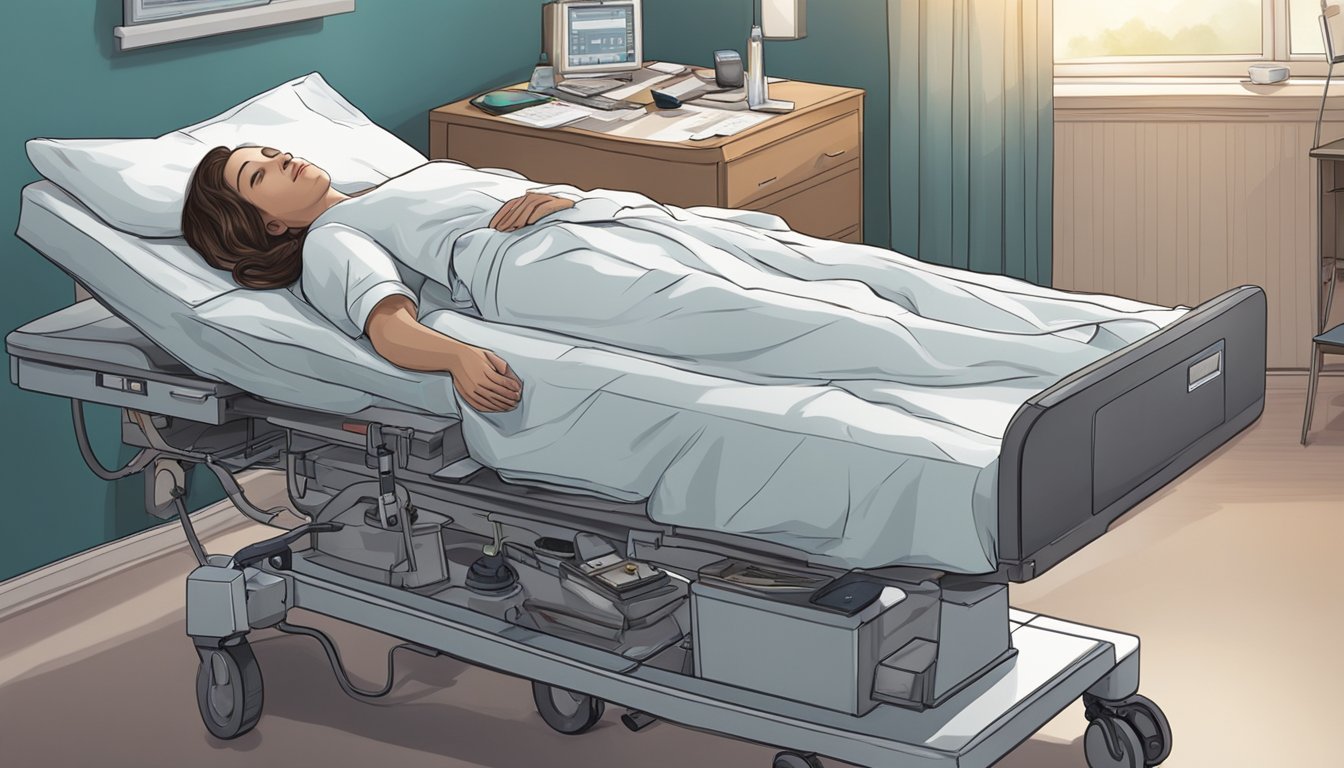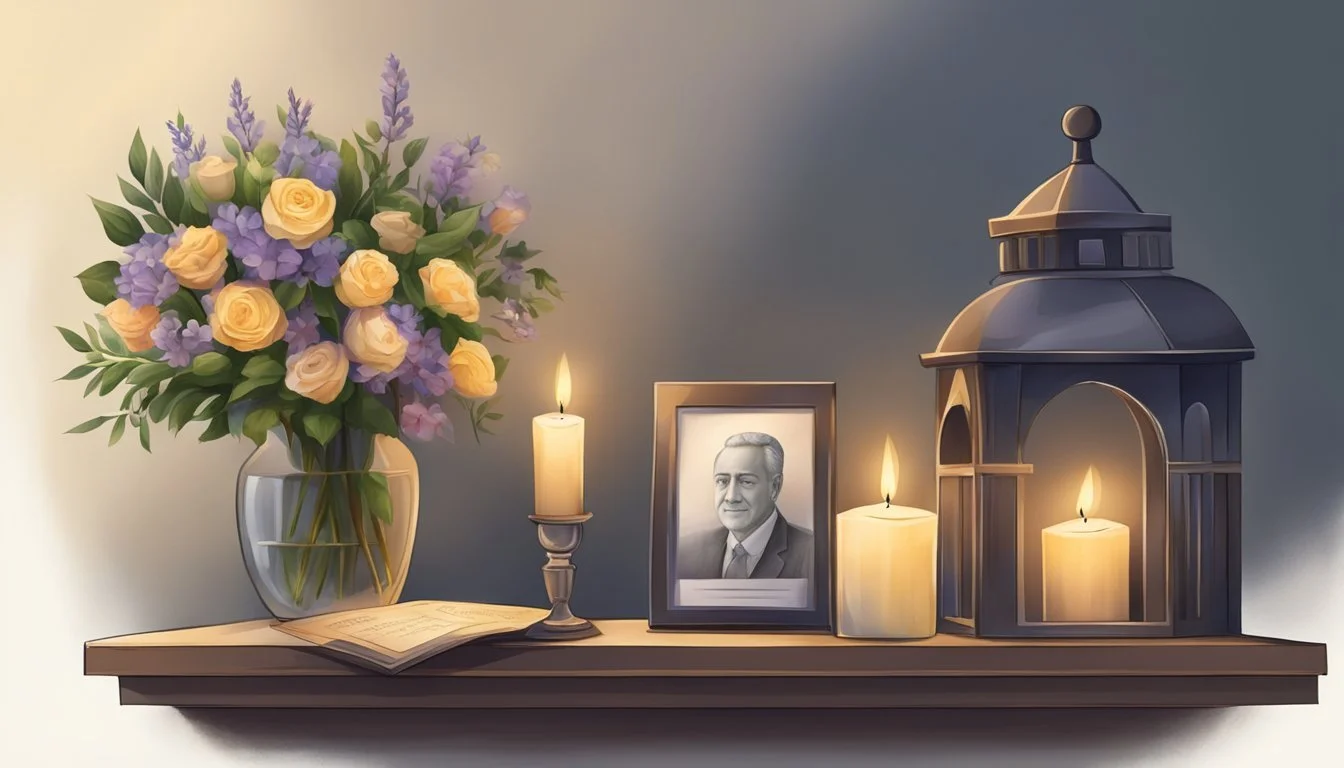Tragic End: How Did JonBenét Ramsey's Mom Die? The Heartbreaking Truth Revealed!
Patsy Ramsey, mother of JonBenét Ramsey, faced intense scrutiny after her daughter's tragic murder in December 1996. The case captivated the nation and put the Ramsey family under a microscope. Despite the challenges and public suspicion, Patsy remained dedicated to her family and son.
Patsy Ramsey died on June 24, 2006, at the age of 49 from ovarian cancer. She had battled the disease for several years, with a recurrence leading to her passing. Her death came nearly a decade after her daughter's unsolved murder, which continues to intrigue the public to this day.
The loss of Patsy Ramsey marked another chapter in the complex and heartbreaking story of the Ramsey family. Her husband, John Ramsey, was left to carry on alone, still seeking answers about their daughter's death while mourning the loss of his wife. Patsy's passing also meant that key questions about the JonBenét case would remain unanswered, as she took any knowledge she may have had to her grave.
Early Life and Background of Patsy Ramsey
Patsy Ramsey was born Patricia Ann Paugh on December 29, 1956, in Parkersburg, West Virginia. She was the daughter of Nedra Ellen Ann Rymer and Donald Ray Paugh, an engineer and manager at Union Carbide.
Ramsey grew up in West Virginia and attended Parkersburg High School, graduating in 1975. She then enrolled at West Virginia University, where she pursued a degree in journalism.
During her time at university, Ramsey joined the Alpha Xi Delta sorority. She successfully completed her studies and earned a B.A. in journalism in 1978.
Patsy Ramsey was known for her involvement in beauty pageants. She participated in various competitions, showcasing her talents and poise. Her dedication and charm led to significant achievements in the pageant world.
In 1977, Ramsey reached a notable milestone in her pageant career by winning the title of Miss West Virginia. This victory allowed her to represent her home state on a larger stage, further establishing her reputation as a pageant queen.
Tragedy in the Ramsey Family
The Ramsey family's world was shattered on December 26, 1996, in Boulder, Colorado. Six-year-old JonBenét Ramsey was found murdered in the basement of her family home.
The discovery came hours after Patsy Ramsey, JonBenét's mother, called 911 to report her daughter missing. A mysterious ransom note had been found in the house.
JonBenét's body bore signs of strangulation and a skull fracture. The brutal nature of the crime shocked the community and captivated national attention.
Police initially focused on the family as suspects. John and Patsy Ramsey faced intense scrutiny and media pressure in the aftermath of their daughter's death.
The case remains unsolved to this day. Theories about the killer's identity have ranged from an intruder to family members.
The tragedy took a heavy toll on the Ramseys. They moved from Boulder and struggled to maintain a normal life under constant public suspicion.
Patsy Ramsey battled ovarian cancer while dealing with the aftermath of her daughter's murder. She passed away in 2006, never seeing the case resolved.
The JonBenét Ramsey homicide continues to be one of America's most infamous unsolved crimes, leaving many questions unanswered for the family and public alike.
Investigation and Media Coverage
The JonBenét Ramsey case garnered intense scrutiny from law enforcement and the media. Multiple agencies were involved in the investigation, which faced challenges and controversies over the years.
The Initial Response and Ransom Note
Police arrived at the Ramsey home on December 26, 1996, after Patsy Ramsey called 911 to report her daughter missing. Officers found a lengthy ransom note demanding $118,000 for JonBenét's safe return. The note became a key piece of evidence, with experts analyzing the handwriting and content.
Boulder police initially treated the case as a kidnapping. They secured the house but did not conduct a thorough search of the premises immediately. This decision was later criticized as a crucial misstep in the investigation.
The Discovery of JonBenét Ramsey
John Ramsey found his daughter's body in the basement of their home around 1:00 PM on December 26. JonBenét had been strangled and suffered a skull fracture. The discovery shifted the focus of the investigation from kidnapping to murder.
The crime scene was compromised due to the presence of family friends and the movement of the body. This contamination of evidence posed significant challenges for investigators and forensic experts throughout the case.
Public and Legal Scrutiny of the Ramsey Family
John and Patsy Ramsey quickly became suspects in their daughter's murder. Media attention intensified, with the family facing constant scrutiny and accusations. The Boulder police and district attorney's office publicly stated that the Ramseys were under an "umbrella of suspicion."
A grand jury was convened in 1998 to hear evidence in the case. In 1999, the grand jury voted to indict John and Patsy Ramsey for child abuse resulting in death and accessory to a crime. However, the district attorney refused to sign the indictment, citing insufficient evidence.
Notable Developments in the Investigation
DNA evidence found on JonBenét's clothing did not match any family members, leading to new theories about an intruder. In 2008, the Ramsey family was officially cleared as suspects based on this DNA evidence.
Detective Lou Smit, who worked on the case, developed the intruder theory. He pointed out evidence that supported this possibility, including a basement window that may have been used for entry.
The case remains unsolved as of 2025. Multiple documentaries and books have explored the investigation, keeping public interest alive. The Boulder Police Department continues to receive tips and pursue leads in their efforts to solve the murder of JonBenét Ramsey.
The Death of Patsy Ramsey
Patsy Ramsey passed away on June 24, 2006 at the age of 49. She died from ovarian cancer at her home in Atlanta, Georgia.
Patsy had initially been diagnosed with stage 3 ovarian cancer in 1993. She underwent treatment and entered remission for several years.
In 2002, her cancer unfortunately returned as stage 4. Patsy battled the disease for four more years before succumbing to it in 2006.
Throughout her illness, Patsy continued to advocate for solving her daughter JonBenét's murder case. She co-authored the book "The Death of Innocence" with her husband John in 2000.
Patsy's funeral was held at St. James Episcopal Cemetery in Marietta, Georgia. She was buried next to her daughter JonBenét.
Her death came nearly 10 years after JonBenét's unsolved murder in 1996. Patsy maintained her innocence in the case until the end of her life.
The Aftermath and Continued Speculation
The JonBenét Ramsey case left a lasting impact on the Ramsey family and public consciousness. Patsy Ramsey's life and death became intertwined with the ongoing mystery surrounding her daughter's murder.
Ramsey Family's Life Post-Murder and Patsy's Passing
After JonBenét's death, the Ramsey family faced intense scrutiny and media attention. They moved to Atlanta in 1997 to escape the spotlight. Patsy Ramsey appeared on Larry King Live and other shows to defend her family's innocence.
In 2002, Patsy was diagnosed with stage 4 ovarian cancer. She continued to fight for justice for JonBenét while battling her illness. Patsy passed away on June 24, 2006, at age 49, never seeing her daughter's case solved.
John Ramsey remarried in 2011. Burke Ramsey, JonBenét's brother, gave a rare interview in 2016, maintaining his family's innocence.
New Theories and Ongoing Interest in the Case
Despite Patsy's death, public fascination with the case persists. New theories emerge regularly, ranging from intruder scenarios to family involvement. Some focus on the ransom note, while others examine DNA evidence.
In 2019, a petition called for new DNA testing using advanced techniques. The case has inspired numerous books, documentaries, and TV specials. Many still debate whether JonBenét's death was a kidnapping gone wrong or something more sinister.
Burke Ramsey sued CBS in 2016 for a documentary suggesting his involvement. The lawsuit was settled in 2019. The case remains open, with Boulder police still investigating leads.
Cultural Impact and Legacy
The JonBenét Ramsey case left an indelible mark on American society, shaping public perceptions of child beauty pageants and influencing media coverage of high-profile crimes. It sparked debates about parental responsibilities and the exploitation of children in the entertainment industry.
Influence on Society and Law Enforcement
The Ramsey case heightened awareness of child safety issues and led to changes in law enforcement practices. Many police departments revised their protocols for handling child disappearances and homicides. The case also sparked discussions about the ethics of child beauty pageants, with some states considering age restrictions or outright bans.
Public scrutiny of the investigation exposed flaws in evidence collection and preservation techniques. This prompted improvements in forensic procedures and increased training for detectives handling sensitive cases involving children.
Representations in Books and Films
Numerous books, documentaries, and fictional adaptations have explored the Ramsey case. These works often focus on the mystery surrounding JonBenét's death and the media frenzy that followed. Notable examples include:
"Perfect Murder, Perfect Town" by Lawrence Schiller
"JonBenét: Inside the Ramsey Murder Investigation" by Steve Thomas
"The Cases That Haunt Us" by John Douglas and Mark Olshaker
Several TV movies and documentaries have also tackled the subject, including:
"Who Killed JonBenét?" (2016)
"The Case of: JonBenét Ramsey" (2016)
"Casting JonBenét" (2017)
These productions have kept public interest in the case alive, often re-examining evidence and presenting new theories about the unsolved murder.







